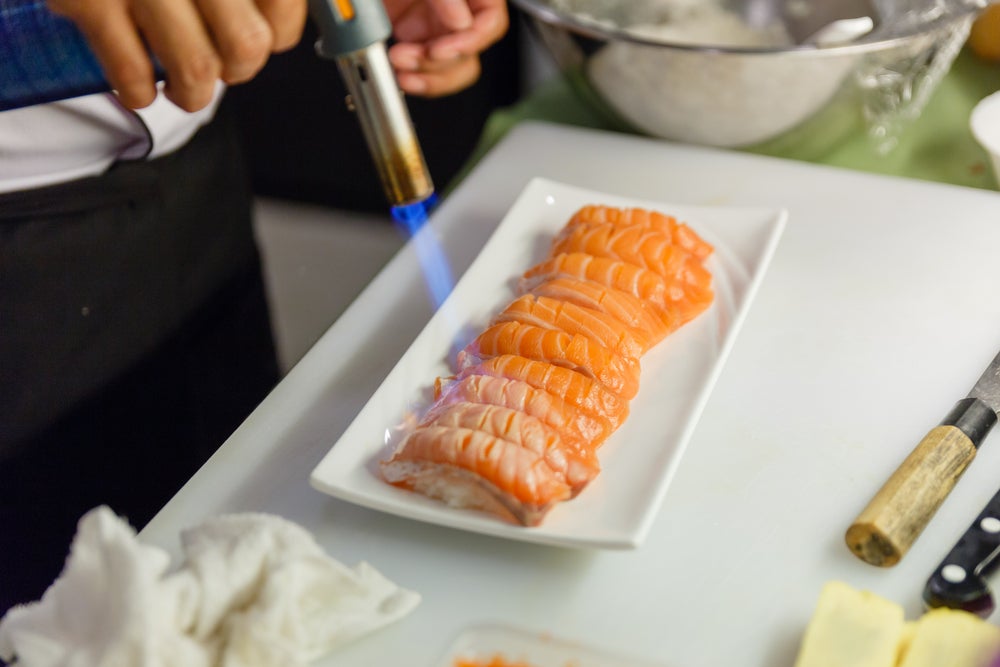
A kitchen flamethrower is more than just a gimmicky gadget. It’s actually—dare I say—practical.
I’ve abandoned all childhood safety rules in the kitchen and can confidently say I play with fire. With a cooking torch, naturally.
Equipping yourself with a canister of butane and handheld torch may sound like an at-home chemistry experiment about to go terribly wrong, but there are some pretty smart tricks your torch can help you with, perhaps most obviously: make a killer crème brûlée. The science is pretty simple. Once a sprinkling of sugar gets blasted with heat, the loose crystals transform into an even layer of caramelized sugar. A gentle tap with your spoon breaks the hardened, glassy top, leaving you with a spoonful of creamy custard quivering beneath a cap of deep, nutty sweetness. Not to mention it’s a surefire way (pun alert) to impress your dinner-party guests.
But a torch is hardly a one-trick pony named Brûlée. A cooking torch has practical, everyday uses too. For breakfast, you can transform a plain lumpy bowl of oatmeal with a few slices of caramelized bananas—just top the bananas with sugar and hit them with the fire for 10 seconds or so. An already creamy, luscious mug of matcha hot chocolate improves with a torched marshmallow, blackened on the outside and gooey on the inside just like the ones at summer camp.
For a 1950s throwback, make a Baked Alaska, a showstopping glory with swirls of browned and toasted meringue. For dinner, skip the messy outdoor grill and blister tomato and pepper skins with a blast of butane instead. If you have access to sushi-grade raw salmon, make some nigiri with it and char the top. Or finish off a steak with the torch in place of a traditional cast-iron searing.

The beauty of the cooking torch is that it brings out smoky and nutty flavors we’d otherwise depend on grills and broilers to do in a more compact body. Most home oven broilers max out at 500°F, but the flame of a torch can reach nearly 3,000°F, leaving you with crackly sugar crusts and perfectly charred skins without turning on any additional appliances. And with most models priced between $10 and $30, you’re not spending a whole lot.
But practicality aside, cooking with a butane-powered torch is a badass move, which is honestly its biggest appeal. I may not fully understand the intricacies of Maillard reactions or caramelization on a molecular level, but I do know that sugar plus high temperature equals browning, which is about all you need to use a cooking torch. With the press of a button, you’ll see the tips of a powerful blue flame dance across the surface, brûléeing French toasts or lemon tarts right before your eyes.